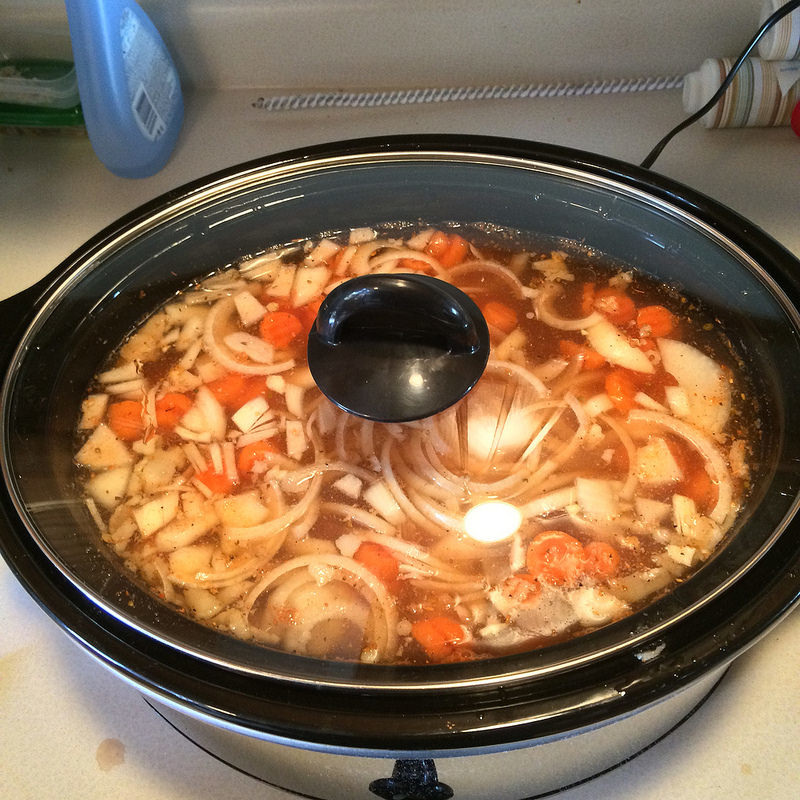I completely understand how important, small, manageable changes are to creating success! I see it all the time with my patients and the research also supports this approach. Therefore, I will only mention 3 small things you can do to make a big impact on your eating habits and your health.
There you have it. Some very simple changes you can make to how you eat to improve the quality of your diet. Now I am not saying you have to even do this all at once, pick one and start with that. Then you can look at adding the others over time. If you never start, you'll never get the benefits, but if you try to change everything at once you'll feel overwhelmed and eventually you will drop everything.
Have questions about these tips or how to have better eating habits? Talk to me about it. I love helping people make gradual, positive changes that benefit their health and well being. Note: Talk to your Naturopathic Doctor today about getting assessed and treated if needed, and as always talk to your health care provider before beginning any new medication or supplement. This information is not meant to replace the advice/guidance of a medical professional, nor should it be acted upon by individuals unsupervised by the appropriate healthcare provider.
1 Comment
False Claims Then there’s the issue of the various claims that sunscreen manufacturers make about their products. Based on the research that’s been completed to date, there is insufficient data to support most claims on the sunscreen bottle. Claims such as: ‘waterproof’, ‘sweatproof’ and ‘broad spectrum protection’ don’t hold up. In fact, probably the most misleading is ‘cancer protection’ or ‘prevents cancer’. Sunscreen alone has not actually been shown to protect against certain forms of skin cancer, particularly melanoma, which is the most deadly form of skin cancer. Melanoma and Other Skin Cancers Why should we be concerned about melanoma? Well, since 2000, the rates of new melanoma cases among both men and women have been climbing by 1.4 to 1.6 percent per year (CDC 2014). A number of studies conducted in the 1990s reported higher incidence of melanoma among frequent sunscreen users (Autier 1998, Beitner 1990, Westerdahl 2000, Wolf 1998).
SPF: Is Bigger Better? Does SPF or the Sun Protection Factor make a difference? Most of us believe that Bigger Is Better, but there is no definitive evidence of increasing protection as the SPF values increase. In fact, beyond SPF 50, there appears to be little benefit. Properly applied SPF 50 blocks approximately 98% of sunburn rays. Properly applied SPF 100 blocks 99%. When used correctly, sunscreen with SPF values in the range of 30 to 50 will offer adequate sunburn protection, even for people most sensitive to sunburns.
Oxybenezone and 4-MBC are hormone disruptors and frequently used UV filters used in sunscreens. Oxybenzone could be found in about 70% of the non-mineral sunscreens evaluated by the EWG this year. Retinyl Palmitate and other Vitamin A derivatives have been shown to result in more skin tumors and lesions on animals treated with this ingredient and then exposed to sunlight. While MI, has actually been labeled as an inactive ingredient or preservative, was called ‘the allergen of the year’ by the American Contact Dermatitis Society in 2013. In March 2015, the European Scientific Committee on Consumer Safety concluded that no concentration of MI could be considered safe in leave-on cosmetic products (EU SCCS 2014). MI is present in 66 sunscreens assessed in this year’s report. What to Look for in a Good Sunscreen All these concerns in mind, what can we do to better protect ourselves from the harmful effects of sun exposure? One thing, when using sunscreen, pick the right one. Based on current research, mineral sunscreens tend to rate best, particularly those with zinc oxide or titanium dioxide. They are stable in sunlight, offer a good balance between protection from the two types of ultraviolet radiation (UVA and UVB) and don’t often contain potentially harmful additives. (EWG report, 2016).
Sunscreen is a helpful tool for protecting your skin from the harmful effects of the sun when used appropriately. Be sure to use it as recommended, and choose a sunscreen that has minimal/no harmful chemicals in it, particularly a mineral based one. Keep these things in mind, and the additional measures you can take to protect your skin, and you can help decrease your risk of developing serious illnesses like skin cancer.
Why do we care about Liver Health? One of the most important functions of the liver is to detoxify our bodies. With the popularity of detox diets these days many people worry about the liver’s ability to detoxify, but in fact there’s no need to worry because unless your liver is in the final stages of failure then it’s going to detoxify your body all on its own. Without getting too in depth with the physiology, the liver breaks everything down in two phases, the fat- soluble and water- soluble toxins.
All this means is that everything needs to be broken down in stages, so it can be effectively recycled or shuttled out of the body in the form of waste (namely urine or stool). If these functions aren’t done properly, this can have profound effects on just about every other system in the body. If the liver isn’t functioning properly then overall digestion, metabolism, hormonal balance and the immune system don’t function well. The Liver performs the following vital functions:
Essentially, without the liver it would not be possible to survive very long. We are living in a Toxic world We are exposed to all kinds of toxins every day of our lives. From the moment we are conceived, we are exposed to toxins through our mother. At present, there are over 80,000 chemicals registered by the Environmental Protection Agency. 3,800 are ‘high-use’ chemicals and less than ½ have been assessed for toxic effects in humans. Less than 9% of these chemicals have been assessed for toxic effects on children. If we don’t take care of our liver’s health, we won’t be able to function in our toxic laden environment. How do we know we’re experiencing symptoms of toxicity? Well that in and of itself is part of the problem. The overall symptoms of toxicity are quite general, and can easily be mistaken as part of another problem. Some of the symptoms include: fatigue, headaches, muscle and joint pain, mood changes, cognitive impairment and possibly neurological problems.  Are you susceptible to toxicity? Multiple factors affect how your body deals with toxic burden.
To better understand what toxicity looks like in the body, the analogy I like to use is a bucket. We all have different buckets, some are short and fill very quickly, or have a spout that doesn’t drain effectively, or perhaps an average size bucket with a decently emptying spout. However your bucket functions, determines how quickly it will fill (accumulate toxins) or empty (eliminate toxins). Unfortunately, those of us with shorter buckets/poorly draining spouts are more likely to build up toxins quickly and/or not eliminate them quickly enough to avoid symptoms of toxicity. What Can We Do?
Work with a medical professional to help correct problems
Note: Talk to your Naturopathic Doctor today about getting assessed and treated if needed, and as always talk to your health care provider before beginning any new medication or supplement. This information is not meant to replace the advice/guidance of a medical professional, nor should it be acted upon by individuals unsupervised by the appropriate healthcare provider.  One of the most talked about supplements after probiotics is fish oil. Many Naturopaths prescribe it, and some people take it just because they’ve heard it’s good for them. So is there something to all this excitement, or is it just hype and good marketing? There are many reasons why fish oil is potentially a good supplement, from a growing baby to adult. These healthy fats help create a healthy brain, decreases risk of certain cancers, decreases overall heart disease, decreases and treats depression, and so on. There are two main components: EPA (eicosapentaenoic acid) and DHA (docosahexanoic acid), which are the long chain fatty acids known as omega 3s. They are naturally found in fish and shellfish, and nut oils like walnuts. These two together, are the omega 3s that research focuses on, and they are important because of the effect they have on inflammation. In general, they decrease or mediate inflammation in the body, which is involved in many disease processes like the ones mentioned above. Getting Enough If you want to get a good amount of these essential fatty acids in your diet, most people can achieve this if you can consume 2 eight-ounce servings of fish each week. However, if you are pregnant, nursing or have a particular health condition then you may need more than that. For example, a growing baby needs a lot of DHA to make a healthy brain. A full term baby needs 2400 mg DHA per day until 3 months postpartum. This can be achieved with cod liver oil, or a good EPA and DHA supplement or eating fish 24/7. You would need to eat about 3 lbs of oily fish, (sardines, mackerel, herring, or wild salmon) every day or more if you’re only eating white fish. A Note on Toxins Unfortunately, due to poor fishing practices and certain industrial processes heavy metals are a legitimate concern when consuming fish and fish products. Mercury and polychlorinated biphenyls (PCBs) are common toxins in seafood. As a general rule when considering the cumulative effect of these toxins, the higher up the food chain, the greater the toxic load. So fish that eat plants, will have a lower toxin load than fish that eat other fish.
 Getting the Most Benefit from Omega 3s You can take several steps to ensure you’re getting the optimal benefits from fish. Ask your Naturopath/healthcare provider: There are many different fish oil supplements on the market, get assistance from your healthcare provider to select one that is low risk for heavy metals and toxins and provides the most benefit for your money. Make sure that your fish are selected from a good source: Read the labels on your food so you know where your fish is coming from and how it has been processed. Two good online sources are:
Do the sniff test. Buy the freshest fish you can find. The longer a fish is exposed to oxygen, the more it loses some of its omega-3 benefits. Cook it right: You can’t cook the toxins out, but you can minimize exposure by removing the skin and surface fat prior to eating. Note: Talk to your Naturopathic Doctor today about getting assessed and treated if needed, and as always talk to your health care provider before beginning any new medication or supplement. References: Phillipson-Webb, L. 2010. Sprout Right: Nutrition from Tummy to Toddler. Penguin Canada. Romm, A. 2003. Naturally Healthy Babies and Children: A Commonsense Guide to Herbal Remedies, Nutrition, and Health. Celestial Arts. Stuart, A. What to Know about Omega 3s and Fish. WebMD. http://www.webmd.com/diet/features/what-to-know-about-omega-3s-and-fish?page=3. Reviewed October 17, 2011.  There are many things we all can do to keep ourselves healthy, eating a diet rich in fruits and vegetables, getting enough sleep, drinking enough water, the list goes on. One important part to avoiding colds and flus is minimizing unnecessary exposure to microbes that can potentially lead to illness. This is the reason why we put so much emphasis on hand washing and hygiene because these practices have been very useful in decreasing the incidence of disease. One of the early pioneers for sanitization practices was a German doctor by the name Ignaz Semmelweis. Dr. Semmelweis noticed that when hands were washed in obstetrical clinics regularly the incidence of puerperal fever was drastically reduced. Normally, puerperal fever carried a 10-35% mortality rate among mothers in the mid 19th century. Due to his diligent efforts and others of that time period, hand washing practices became common place over time. Another practice that has drastically increased is the use of various disinfectants and sanitizers. You can’t go into a hospital without coming across several alcohol disinfectant dispensers. Some people even make it common practice to carry bottles or wipes of alcohol based disinfectant in their purses or cars just in case. However, are they actually as effective as we think they are at dealing with microbes? Sterilization vs. Disinfection First, let’s get some terms straight. Sanitizing or sterilizing is not the same as a disinfectant. Both procedures do destroy bacteria, viruses and fungi but not to the same extent. According to the CDC (Center for Disease Control), sterilization is defined as, “Any item, device, or solution is considered to be sterile when it is completely free of all living microorganisms and viruses. The definition is categorical and absolute (i.e., an item is either sterile or it is not).” Whereas disinfection is defined as, “…less lethal process than sterilization. It eliminates nearly all recognized pathogenic microorganisms but not necessarily all microbial forms (e.g., bacterial spores) on inanimate objects. Disinfection does not ensure an “overkill’’ and therefore lacks the margin of safety achieved by sterilization procedures.” (CDC). Understanding the difference between these terms is important because the types of cleaners and other products we use to achieve cleanliness are of varying strengths on the disinfectant spectrum. Due to the harshness of sterilization methods it’s not possible to sterilize people. Also remember there are ‘good’ and ‘bad’ bacteria, and we need the good bacteria to survive. If all forms of bacteria were wiped out from our bodies we would actually be susceptible to infection by the bad bacteria. Classes of Disinfectant When we’re discussing what kinds of things are good to use for cleaning and keeping ourselves healthy we need to think about the level of disinfectant needed. Disinfectant products are categorized from high to low disinfectant properties. They are defined as follows: High disinfectant: This procedure kills vegetative microorganisms and inactivates viruses, but not necessarily high numbers of bacterial spores. Such disinfectants are capable of sterilization when the contact time is relatively long (e.g., 6 to 10 hours). As high-level disinfectants, they are used for relatively short periods of time (e.g.,10 to 30 minutes). These chemical germicides are potent sporicides and, in the United States, are classified by the FDA as sterilant/disinfectants. They are formulated for use on medical devices, but not on environmental surfaces such as laboratory benches or floors. Intermediate disinfectant: This procedure kills vegetative microorganisms, including Mycobacterium tuberculosis, all fungi, and inactivates most viruses. Chemical germicides used in this procedure often correspond to Environmental Protection Agency (EPA)-approved “hospital disinfectants” that are also “tuberculocidal.” They are used commonly in laboratories for disinfection of laboratory benches and as part of detergent germicides used for housekeeping purposes. Low disinfectant: This procedure kills most vegetative bacteria except M. tuberculosis, some fungi, and inactivates some viruses. The EPA approves chemical germicides used in this procedure in the US as “hospital disinfectants” or “sanitizers”. To help you understand what kinds of chemicals and products are categorized under each of these subheadings, take a look at the following table: Activity Levels of Selected Liquid Germicides
As you can see the sterilization agents kill everything, but the disinfectant agents have a great deal of variability. Probably the two you’re most familiar with are the hydrogen peroxide and alcohols (ethyl and isopropyl). The hydrogen peroxide and alcohol people typically use would be in the intermediate category at best. So they do help to kill off most organisms, but not all of them. The CDC also mentions that the effectiveness of alcohols is limited, “…they evaporate rapidly, resulting in short contact times, and also lack the ability to penetrate residual organic material. They are rapidly tuberculocidal, bactericidal and fungicidal, but may vary in spectrum of virucidal activity. Items to be disinfected with alcohols should be carefully pre-cleaned then totally submerged for an appropriate exposure time (e.g., 10 minutes).”
Should We Use Hand Disinfectants? So this all comes down to whether it’s worthwhile to use such products as ethyl alcohol hand disinfectants, or if we should just be washing our hands a lot more. As we’ve seen, the alcohol and other such products can be useful to eliminate bacteria, but not completely. So it is certainly better than using nothing at all, but definitely the more effective method is actually washing your hands with soap and water. They should be used as a complimentary measure as opposed to a replacement for hand washing. There are also natural alternatives to alcohol-based products that use plant essential oils and no additional chemicals. These natural products are a nice alternative because essential oils are plants natural defense mechanism against bacteria and are less likely to react with sensitive skin. One example of a product is Clean Well, which is alcohol, paraben and triclosan free. Ultimately, the choice is yours to make. If you do choose to use an alcohol-based disinfectant, make sure it’s at least 70% ethyl or isopropyl and it does not contain any additional chemicals. References: CDC. Biosafety: Appendix B – Decontamination and Disinfection. http://www.cdc.gov/biosafety/publications/bmbl5/bmbl5_appendixb.pdf Clean Well. All the Facts. http://www.cleanwelltoday.com/a-better-way-to-clean/all-the-facts/ Disinfectant vs Sanitizers. University of Hillyard. http://www.hillyard.com/ProductsServices/UniversityofHillyard/Disvsant.htm Semmelweis Society International. Biography of Ignaz Philipp Semmelweis. http://www.semmelweissociety.org/Biography.aspx |
Sarah Connors
I am a Naturopathic Doctor and Doula providing care in the Kitchener-Waterloo area. I have a passion for helping people with their health issues and improving the birth experience for Moms, and their babies. I also have a life long love affair with soccer, curling, and the alto saxophone. Archives
November 2020
Categories
All
|
Photos from Rural Royalty, manu flickr2010, Ryan Dickey, wocintechchat, huskyte77, paulswansen, Black Room Photography, harum.koh, Emery Co Photo, JeepersMedia, BrownGuacamole, wellnesswildflower, JeepersMedia, vastateparksstaff, colindunn, seelensturm, /\ \/\/ /\, 50mm.za, The Simpsons (Lee, Shirley, Luke and Rachel), AGRONAUTI, aivas14, Jonathan Rolande, winnifredxoxo, juhansonin, osseous, nan palmero, Theo Crazzolara, brianfagan, TP studio, wuestenigel, torbakhopper, anka.albrecht, Michael Stern, [-ChristiaN-], franchiseopportunitiesphotos, terren in Virginia, nateOne, barnimages.com, Dun.can, wuestenigel, @lattefarsan, amandabhslater, aphrodite-in-nyc, nutritionaldoublethink, Anne Worner, donnierayjones, mikecogh, angeloangelo, Rob.Bertholf, getaiwan, Lida Rose, matsuyuki, SurFeRGiRL30, marcoverch, amsfrank, mdaltry, nutrition education, Mike Prince, Edsel L, Neighborhood Nini, philipp.alexander.ernst, Mediocre2010, homethods, quinn.anya, Gamma Man, katerha, Eric Kilby, National Institutes of Health (NIH), rcmd_cfdfw_5_2, curtis palmer, Ray in Manila, frankieleon, Airsoftpal.com, byzantiumbooks, cchana, Brian Legate, Matt Lavin, BradHinton, monpetitchouphotography, wuestenigel, alexisjordanlewis, ByEPhotos, erix!, RLHyde, return the sun, quinn.anya, mliu92, frankieleon, loudista, Lyn Lomasi, upslon, derrickbrutel, cchana, National Institutes of Health (NIH), watts_photos, marcoverch, derrickbrutel, francesbean, weegeebored, Airsoftpal.com, Etwood, wu_135, shixart1985, Ingrid Taylar, VeritasFotografie, BioDivLibrary, emmanuelmorales1, Thanks for 1.5 Million Views!!, Will Merydith, reader of the pack, RoxyHobbs, Khanelle Prod' Medias, storyvillegirl, agromonitor, Arenamontanus, six:eleven, cote, SweetOnVeg, nenoirenediaz, lucianvenutian, markhillary, anotherlunch.com, inkknife_2000, archibald jude, rawtrigger, Imaginary Museum Projects: News Tableaus, Pavel P., Courtney Emery, Thien Gretchen, physiognomist, bark, Michigan Municipal League (MML), alberth2, Merelymel13, neofob, Care_SMC, Parker Knight, B*2








 RSS Feed
RSS Feed
